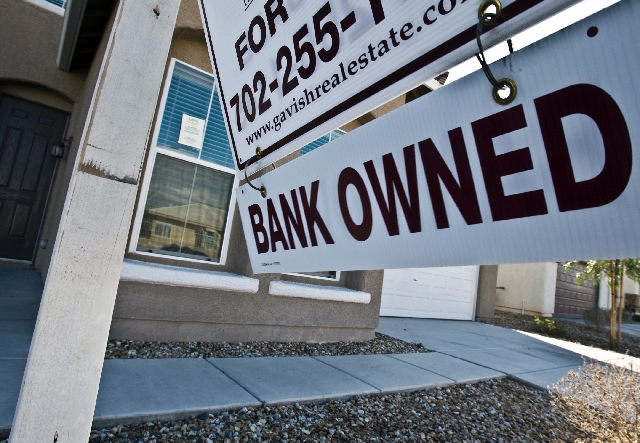Nevada still leads nation in underwater mortgages
Nevada had the highest percentage of mortgaged properties with negative equity in the fourth quarter at 52.4 percent and an average loan-to-value ratio of 103.7 percent, analytic firm CoreLogic reported Tuesday.
Rounding out the top five states with negative equity were Florida (40.2 percent), Arizona (34.9 percent), Georgia (33.8 percent) and Michigan (31.9 percent).
The quarterly analysis showed 10.4 million homes, or 21.5 percent of all residential properties with a mortgage, were still in negative equity at the end of 2012. Rising home prices helped about 200,000 properties return to positive equity, CoreLogic noted.
Negative equity, often referred to as “underwater,” means that borrowers owe more on their mortgages than their homes are worth. The aggregate value of negative equity decreased to $628 billion at the end of the fourth quarter, from $670 billion at the end of the previous quarter.
This decrease was driven largely by improvement in home prices, said Mark Fleming, chief economist for Irvine, Calif.-based CoreLogic.
“In the fourth quarter we again saw an improvement in the equity position of households,” Fleming said in a statement. “Housing market improvements, particularly in the hardest-hit states, are the catalyst for households to regain equity and become participants in 2013’s housing market.”
The average mortgage balance for homeowners who are underwater on their first liens — without home equity loans — is $213,000, leaving the borrower with an average of $45,000 in negative equity.
Local real estate agent Mark Rowley said he’s not completely sold on the CoreLogic report.
“It shows us as a state getting better, but I am not sure if I can personally buy into that yet because of our artificially constrained inventory here in Clark County that has bumped up our prices year over year,” he said. “We need a normalized supply of houses to be able to assess what one should think of the local market health. It comes back to the key question: How many people are not paying their mortgages, but still living in their houses?”






















